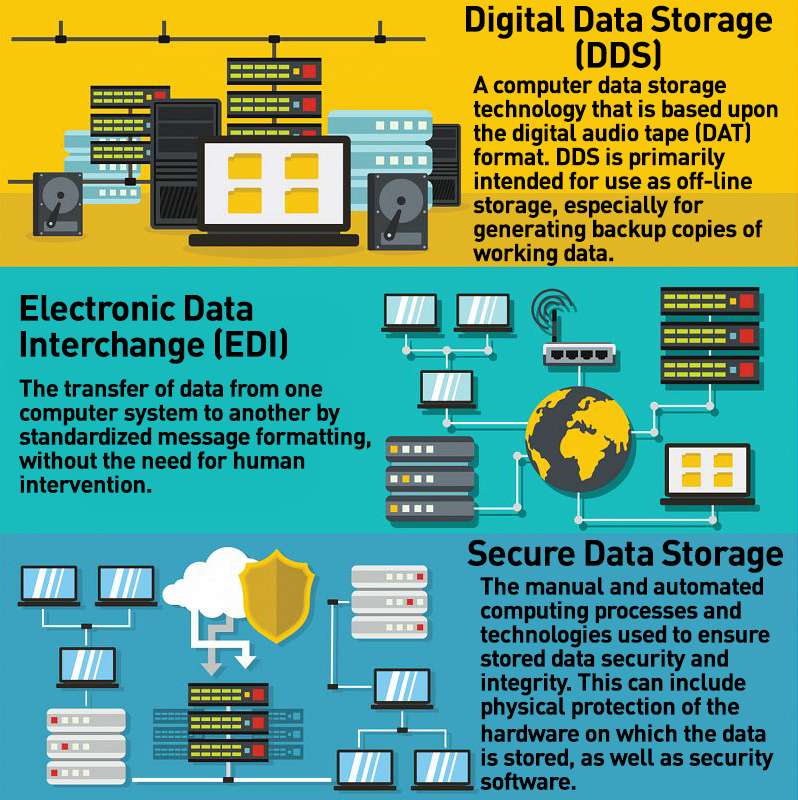The Value of Effective Data Destruction Practices in Shielding Sensitive Details and Ensuring Computer Safety And Security
In an era where data breaches are progressively usual, the relevance of efficient data damage practices can not be overemphasized. Implementing robust data devastation methods not only mitigates these dangers but additionally aligns with legal conformity needs, making certain that organizations support their online reputation and foster customer trust.
Recognizing Data Devastation
Recognizing data devastation is crucial in today's digital landscape, where sensitive information can quickly be compromised. Reliable information devastation entails not simply guaranteeing yet removing files that information is irretrievable through comprehensive techniques. This process is vital for organizations that handle private client info, copyright, or interior records, as any kind of breach can bring about severe economic and reputational effects.
Information damage encompasses various methods, consisting of shredding physical media, degaussing magnetic storage space gadgets, and using software-based options that overwrite data several times. Each method serves a details objective and must line up with the level of sensitivity of the information being disposed of. As an example, physical destruction is commonly chosen for disk drives containing extremely personal information, while software program techniques may suffice for less sensitive information.
Additionally, sticking to market standards and regulations, such as the General Information Security Guideline (GDPR) or the Medical Insurance Portability and Accountability Act (HIPAA), is imperative for compliance and to reduce lawful risks. Organizations should create a robust data devastation plan, train staff members on finest methods, and frequently investigate their procedures to make sure that all delicate info is thrown away safely and effectively.
Risks of Inadequate Practices
Poor information destruction practices reveal organizations to significant dangers that can have far-ranging consequences. When delicate info is not effectively thrown away, it continues to be prone to unauthorized accessibility, which can result in data violations and identity burglary. Such incidents not just compromise the protection of individuals however also taint the organization's online reputation, leading to a loss of consumer count on and possible financial consequences.
In addition, regulatory conformity is significantly stringent in several markets. Failing to comply with data destruction laws can result in substantial penalties and lawsuits against organizations. These fines can stress financial sources and draw away attention from core service procedures.
In addition, the misuse of recurring information can lead to intellectual home burglary or corporate espionage, endangering affordable advantages (data destruction). The effect of poor information destruction prolongs beyond prompt monetary losses; it can likewise cause long-term damage to brand name integrity and market setting

Organizations must acknowledge that data safety and security is not only regarding protecting against breaches; it likewise includes the liable management of data throughout its lifecycle. Ignoring reliable information devastation protocols can have devastating implications, underscoring the need for robust steps to reduce these dangers.
Finest Practices for Data Destruction
Implementing reliable information damage methods is vital for guarding delicate info and maintaining compliance with governing criteria. Organizations needs to embrace a multi-faceted technique to ensure that data is irretrievable, thereby avoiding unauthorized gain access to and prospective violations.
First, information need to be categorized based upon sensitivity, enabling organizations to use appropriate destruction methods customized to the level of danger. For electronic information, using software-based data-wiping devices that adhere to sector criteria can successfully overwrite existing data. Physical damage methods, such as shredding or degaussing, are critical for gadgets that save sensitive details, making sure full removal.
Developing a clear data retention plan is vital, describing how long various sorts of info need to be kept prior to destruction. Routine audits of information storage systems are likewise necessary to determine unneeded or outdated information requiring removal.
Additionally, training employees on the relevance of data browse around this web-site damage and the specific methods to follow fosters a society of safety and security within the organization. Keeping documents of data damage refines offers responsibility and sustains compliance with interior plans and external guidelines. By sticking to these best methods, companies can considerably alleviate the threats associated with data exposure.
Legal and Conformity Factors To Consider

Failing to abide by these policies can cause severe penalties, consisting of significant fines and reputational damage. Organizations has to implement a robust data damage plan that straightens with these legal structures and provides clear guidelines on the proper techniques of information disposal, whether physical shredding or electronic cleaning.
Moreover, maintaining paperwork of data damage tasks is crucial for showing compliance during audits or evaluations. By prioritizing legal and conformity factors to consider, companies can boost their information protection posture and foster trust with clients and stakeholders, ultimately adding to a much more protected data administration atmosphere.
Benefits of Effective Data Damage
Efficient data damage methods extend beyond mere conformity; they supply substantial benefits to companies that prioritize them. By making certain that delicate info is irretrievably ruined, organizations reduce the risk of data breaches and the potential economic effects linked with them. This aggressive technique not just safeguards versus unapproved gain access to however additionally boosts the total credibility of the organization in the eyes of stakeholders and clients.
Carrying out durable information devastation approaches, such as physical devastation of storage space tools or advanced data wiping techniques, contributes to the conditioning of an organization's cybersecurity position. data destruction. It minimizes the her explanation probability of copyright burglary and shields proprietary details, thereby keeping an one-upmanship out there

Verdict
In final thought, effective information devastation practices are important for protecting delicate info and improving total computer system safety and security. Eventually, a commitment to durable data destruction techniques fosters a culture of duty, consequently enhancing a company's cybersecurity pose and maintaining customer count on.
